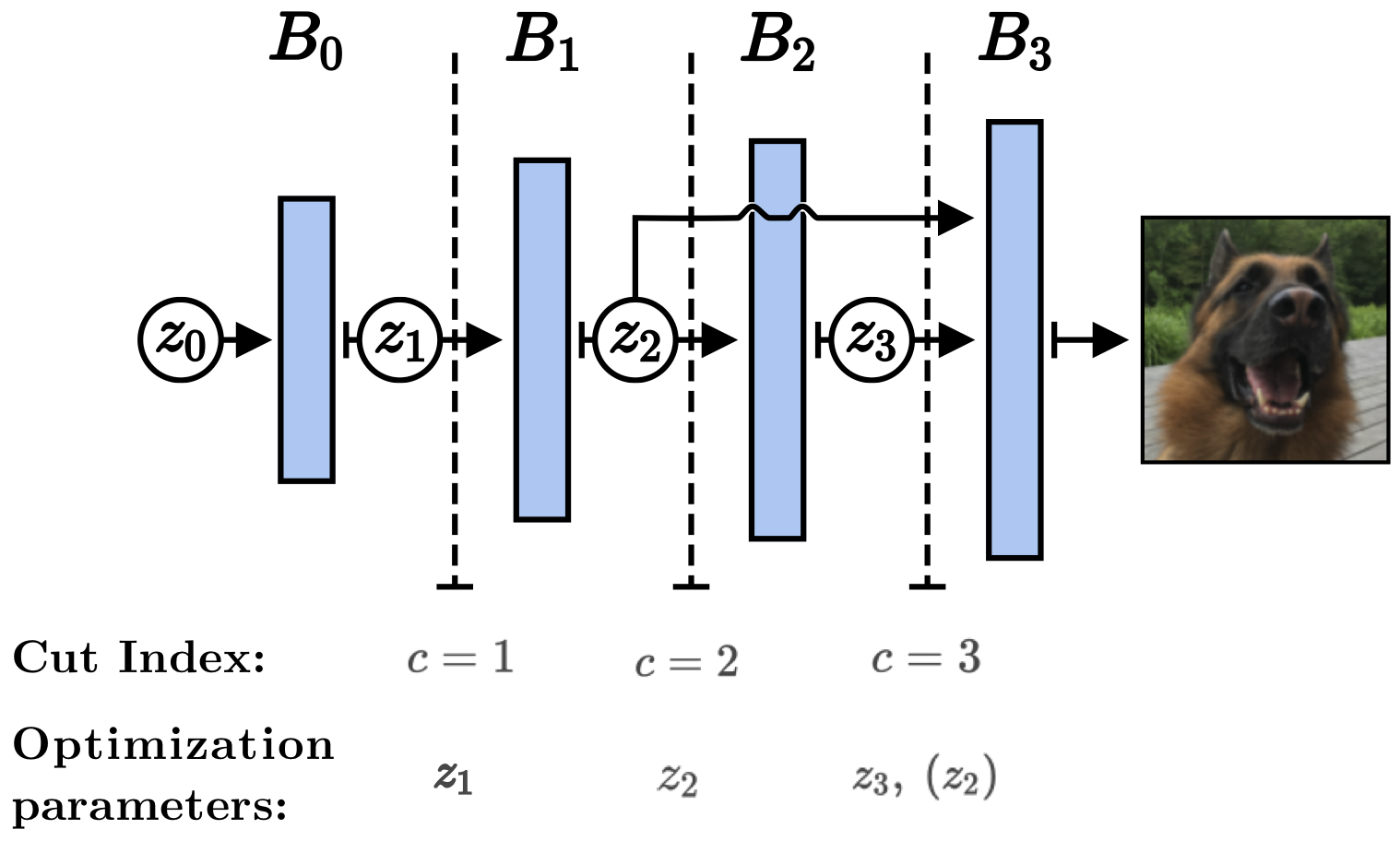by Jung Yeon Park*, Niklas Smedemark-Margulies*, Max Daniels, Rose Yu, Jan-Willem van de Meent, and Paul Hand
(*) equal contribution
TL;DR: In this work, we show that cutting initial layers of a generative signal prior at test time improves image recovery performance.
Recent work has explored the use of generator networks with low latent dimension as signal priors for image recovery in compressed sensing. However, the recovery performance of such models is limited by high representation error. We introduce a method to reduce the representation error of such generator signal priors by cutting one or more initial blocks at test time and optimizing over the resulting higher-dimensional latent space. Experiments demonstrate significantly improved recovery for a variety of architectures. This approach also works well for out-of-training-distribution images and is competitive with other state-of-the-art methods. Our experiments show that test-time architectural modifications can greatly improve the recovery quality of generator signal priors for compressed sensing
To install requirements:
pip install -r requirements.txtThe 'train' and 'test' split for all models come from the CelebA dataset, at different resolutions.
For BigGAN model, we use CelebAHQ dataset
The 'out-of-distribution' split comes from the COCO 2017 Test dataset (See COCO website for more details).
Images are preprocessed by center cropping, and saving to tensors for faster training.
A 95:5 train:test split is used.
-
Download the aligned Celeba dataset. This can be done using PyTorch in a python REPL as follows:
Note that the CelebA google drive has limited downloads per day, so if this fails, the contents of the
*.zipfiles will be junk, and you must wait and try again.import torchvision.datasets as d c = d.CelebA('./data', download=True)
-
Now you should have a folder
./data/celeba/img_align_celeba. Run the preprocessing:DATASET=celeba # For DCGAN, use DATASET=celeba64x64 IMG_SIZE=128 # For DCGAN, use IMG_SIZE=64 DATASET_DIR=${DATASET}_preprocessed python data/preprocess_images.py --dataset $DATASET \ --input_dir ./data/celeba \ --output_dir ./data/${DATASET_DIR} \ --img_size 64 \ --n -1
Before training, you should have run preprocessing as described in Datasets and Preprocessing.
To start training:
python train_began.py --dataset celeba \
--dataset_dir ./data/${DATASET_DIR} \
--batch_size 32 \
--run_name training \
--latent_dim 64 \
--epochs 50 \
--n_train -1To monitor training:
tensorboard --logdir ./tensorboard_logsTo start training:
python train_dcgan.pyTo monitor training:
tensorboard --logdir ./dcgan_tensorboard_logsTo train VAE:
python train_vae.py --epochs 20To monitor training:
tensorboard --logdir ./vae_tensorboard_logsBigGAN's model definition is a patched version of the pre-trained model provided by Hugging Face.
Our experiments are launched for a fixed set of inverse problems, using fixed optimization hyperparams, for an entire folder of images at a time.
In settings.py, each scenario is described with a keyword, and listed once under forward_models (describing the recovery tasks that will be performed), and once under recovery_settings (describing the optimization hyperparams that will be used).
To prepare an experiment, copy the desired images to a folder, such as images/ood-examples.
For example, performing compressed sensing using BEGAN is described by began_cs.
To run the began_cs scenario:
python run_experiments --img_dir ./images/ood-examples --model began_csTo run an experiment and also store Tensorboard logs, use:
MODEL=began_cs python run_experiments --img_dir ./images/ood-examples --model ${MODEL} --run_dir ${MODEL} --run_name ${MODEL}... and then track progress in tensorboard using:
tensorboard --logdir ./recovery_tensorboard_logs